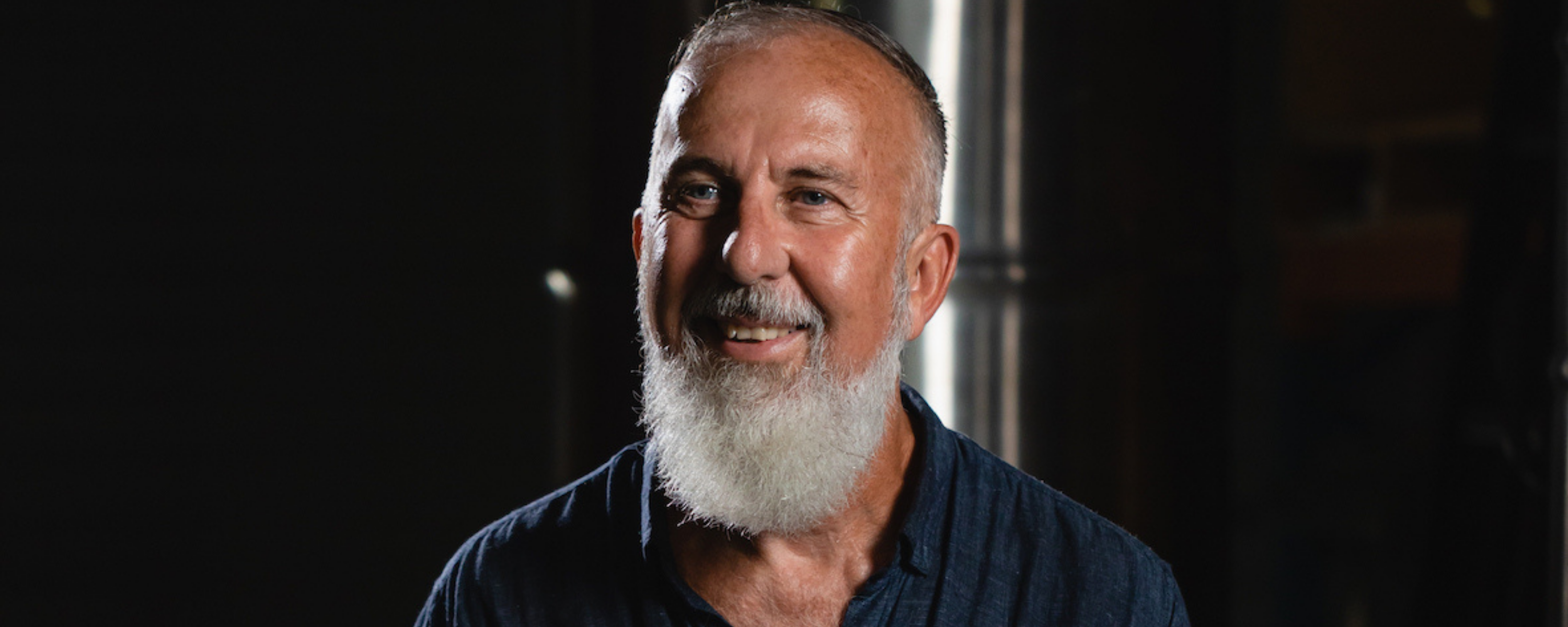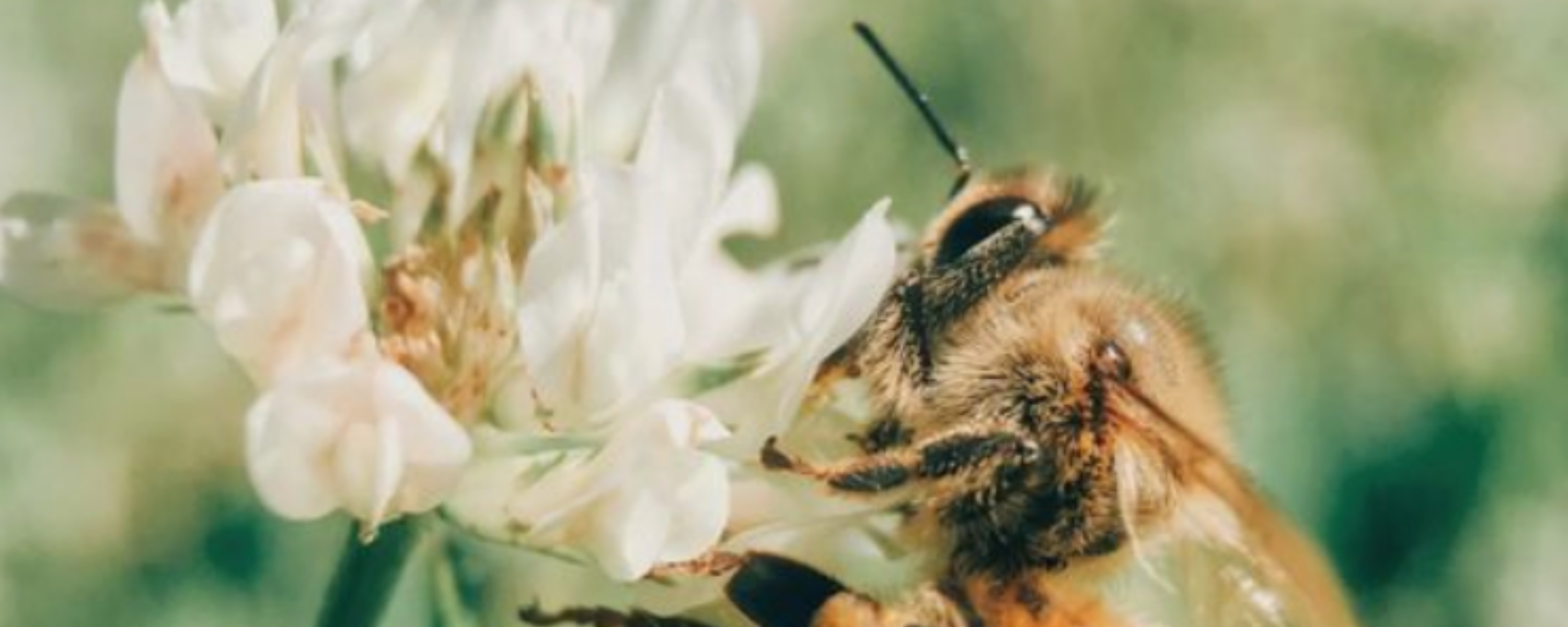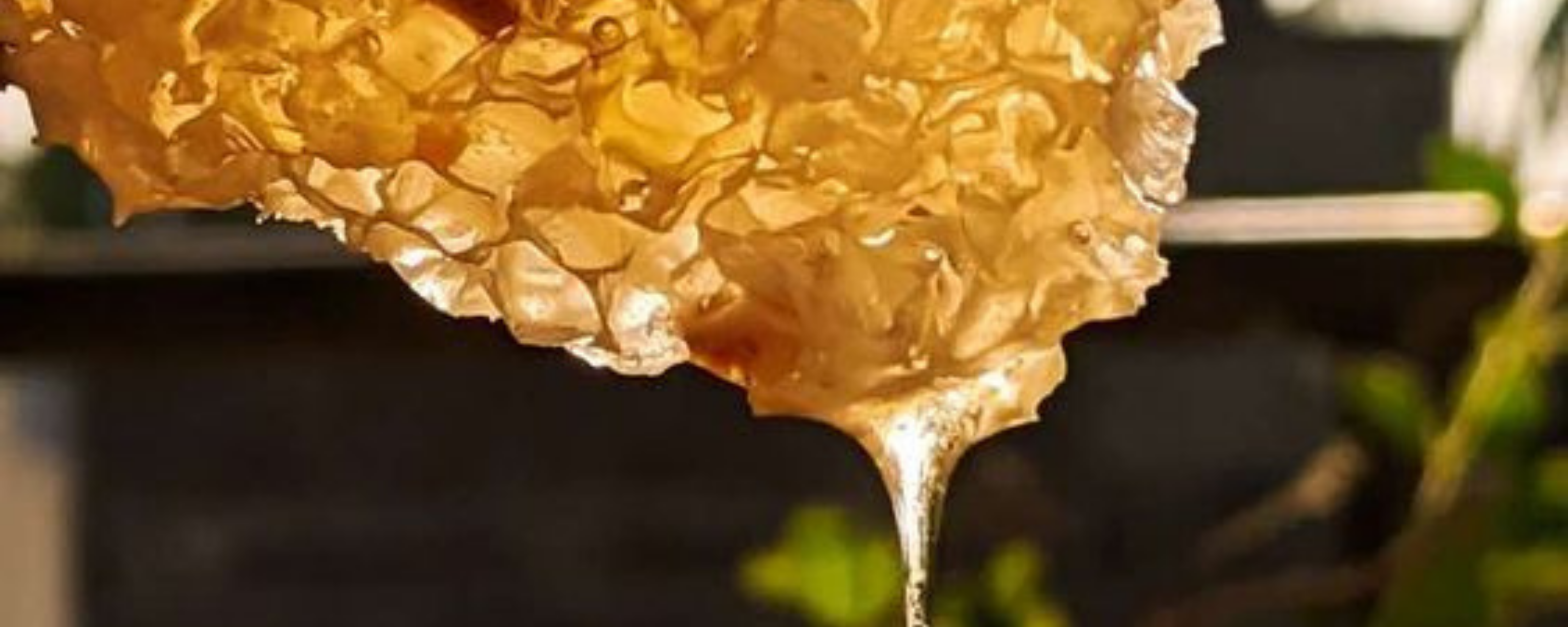
Ask Matt, our Founder - Why Gather By?

What drove you to found Gather By? What were the problems you were seeking to solve?
I started Gather By to try to help fix some of the big issues around climate change and our food security here in Australia.
Gather By started as a food security initiative to bring money and resources into the beekeeping industry and bring back the family farmer.
The fact that Bees are dying around the world, the very same bees that pollinate 70 of the 100 crop species that feed 90% of the world’s population, gives us a priority for action.
Australia is the only nation on Earth free of the deadly Varroa destructor mite, which is killing bees globally, even in New Zealand.
Here, we have issues of land clearing and deforestation, and the widespread use of deadly pesticides.
Our food supply in the hands of corporations is not a good path for us in the long run yet everyone wins when farmers are producing well and are paid a fair price.
Tell us about the state of the Australian and global honey markets at the founding of Gather By.
The Australian honey industry in 2014 was an ageing industry, based on conventional beekeeping practices with beekeepers working long hours to truck bees to chase the honey flow.
With large corporations dictating low prices, beekeepers' profits were suffering, potentially compromising the industry.
Competition is high for beekeeping sites on the limited natural stands of Manuka bushes and other good floral sources, and these sources are further threatened by droughts, fires and land clearing.
Australian premium honey is undervalued and can be mixed with imported honey lowering the price for the Australian beekeeper.
We are missing out on a multi-billion dollar medicinal and therapeutic honey industry with nectar from Australian native plants.
Tell us about the conditions facing Australian honey producers at the time Gather By was incorporated in 2014.
The conditions facing Australian honey producers start with the condition of the bees.
After the recent droughts and fires, beekeepers are rebuilding their bee numbers in the hope that the coming seasons will be better.
Traditional beekeepers work long hours, it's back-breaking work moving bees tens, hundreds or even thousands of kms to chase the honey flow.
The prices of table honey are still only around $5-$6/kg which is hardly enough to make a living for the beekeeper.
With land clearing, droughts, floods and bushfires there is a lack of remaining native bushland to keep bees and produce honey
Some honey is being mixed with toxic imported honey to produce cheaper and cheaper honey.
We are the canary in the coal mine when it comes to climate change/climate volatility. It is getting very difficult out here in the country for beekeepers.
What is Manuka Honey?
Manuka honey is produced in NZ and Australia from bees feeding on a particular species of Australian native plants.
These plants are from the Myrtaceae family, genus Leptospermum, colloquially known as Jelly Bush or Manuka.
Manuka plants contain a molecule called Dihydroxyacetone (DHA) in the nectar that bees feed on and converts to another molecule Methylglyoxal (MGO).
MGO is the main anti-bacterial/antibiotic ingredient in the honey and is measured in mg/kg, the higher the MGO the higher the price of the honey.
Manuka Honey is packaged & priced for sale by MGO level shown as MGO100+ to MGO1000+ and beyond.
What is unique about Gather By’s approach? What sets you apart from the competition?
What is fundamentally unique that sets Gather By apart from the competition is that we have developed a closed-loop regenerative farming model that produces Manuka Honey sustainably while ensuring farmers can earn a living wage.
We have undertaken many years of research and have identified 15 varieties of the 87 varieties of Manuka bushes that have high to very high levels of DHA.
We are at second and third-generation plants clonally propagated from licensed nurseries across bio-secure regions.
We work with the community to grow these plants in a way that restores ecosystems for our pollinators keeping bees healthy and strong while keeping bees ‘in situ’.
We collaborate with First Nation’s People and the Community in an Australian farming model planting this indigenous bush to produce an enduring supply of this honey.
We use innovative technologies monitoring bees and their health remotely being able to predict volumes from widespread bioregions.
We are producing Honey from the natural stands and from our Medicinal Honey Forests that we produced in a way that retains all the beneficial enzymes of the honey using gentle cold extraction and course filtering techniques.
We developed a large global demand and have the ability to produce more facing the climate change issues with our business model.
Our Honey production processes are BQUAL, HACCP food safety, and Halal compliant, and our premises are certified for export production. We maintain a stringent Quality Assurance (QA) process throughout our entire supply chain.
What makes Australia unique as a producer of Honey?
Australia is in such a unique and leading position due to its biodiversity of Australian native plants that are suitable for a wide range of environments and ecosystems.
Australia is the only country left on Earth that does not have the deadly Varroa Destructor mite.
That puts us in a unique position and we need to take advantage for the good of our farmers, regional community, Australia and the world.
Why should people pay a premium for your Honey when you can get Manuka Honey at a supermarket for $20?
Conscious Manuka Honey consumers are looking for a guarantee of provenance, value and results (i.e. fixes my sore throat). Consumers want high quality and most want to buy local. They are prepared to pay an extra few dollars for these benefits than what you might find from the more standard offerings in a supermarket.
The Manuka you might get at normal supermarkets is fine to sweeten a cup of tea, but you wouldn’t want to rely on it for wellbeing, and its contents may not be what you think.
Manuka Honey pricing is based on the MGO levels of the Honey, which is measured in mg/kg. For a Honey to be classified as authentic Manuka under the Australian Manuka Honey Association classification it must contain at least MGO85+.
The ability to produce Honey that preserves all its beneficial enzymes is backed by science and takes time. We sustainably produce a range of products starting around $20-$30 per jar for gut health, general wellness and immunity.
The higher active Honey levels of MGO500 to the premium MGO1000+ can be used for First Aid and Wound Care, Burns, Skin treatments and Acne, and can cost up to a few hundred dollars a jar.
The cost of disease prevention is cheaper than the cure, and our world-premium Manuka Honey is competitively priced and is bought by the average person and family to naturally assist with their ailments.
Tell us about the role that sustainability plays in Gather By’s business model.
Gather By’s business model is built from the ground up on sustainability and regenerative principles and is inherent in all aspects of the business model for the long term.
Native plants that are adapted to a range of environments are being replanted in a way that creates natural habitats, healthy bee environments, and biodiversity.
Sustainable harvesting of our Honey allows the bees to feed on their Honey keeping them healthy and strong.
All stakeholders benefit in the supply chain from the propagation of the plants through to the consumer of our Honey.
Our environment and the place we call home will improve from our actions creating a new business for the better and healthier times ahead.
Do you have a plan to reduce your carbon footprint?
Since our business inception, we have adopted a low energy consumption model planting out millions of trees capturing hundreds of thousands of tonnes of CO2.
We aim to be completely carbon neutral by 2025.
Explain what a closed-loop regenerative farming model is, and what its benefits are to the economy and ecology of Australia.
Gather By’s regenerative farming model rehabilitates and enhances the entire ecosystem of the farm by starting with soil health, water management, native plant selection.
It improves the environmental resources it uses, rather than destroying or depleting them.
Our closed-loop farming practice recycles all nutrients and organic matter material back to the soil that it grew in. This preserves the nutrient and carbon levels within the soil and allows farming to be carried out on a sustainable basis.
Our closed-loop business model controls all aspects of the supply chain from propagation to planting, beekeeping, honey production, packaging and global sales – a full end-to-end model.
What are the health benefits of Manuka Honey?
There has been extensive medical research on Manuka Honey over the last 40 years, which has shown it to be highly beneficial for human health and wellness.
Not your average Honey, Australian Manuka Honey has been tested and effective against 80 different pathogenic bacteria including the MRSA ‘Staph’ superbug.
It is currently packaged and used for gut health, general health and wellness, strep throats, skin treatment and infections, first aid, burns and wound care to name a few.
What does success for Gather By look like to you?
We want Gather By to be part of the solution, not just to bees dying, but also to the climate crisis and the decline of successful family farming in Australia.
Success to me looks like this:
1) Hundreds of successful growers managing medicinal honey farms from 5Ha to 100+ Ha along the East Coast of Australia.
2) Operations along the East Coast produce a total of 2,000 tonnes annually with global distribution.
3) Varroa free country producing pure, raw and potent lifesaving honey into matured markets in complementary and conventional medicine around the globe.
4) More than 600 people, directly and indirectly, are employed creating a new billion-dollar industry for Australia with healthy ecosystems and pollinator havens, capturing hundreds of thousands of tonnes of CO2 emissions.
How do you want your customers to feel the first time they open your product?
When someone buys our Honey, we want them to feel pleased and confident in their purchase, knowing that they are naturally supporting their health and wellbeing, while also supporting bee health, revegetation, and carbon capture.
We want our consumers to know our product is authentic, pure and raw, and that every purchase supports tree plantings, improves ecosystems, and our most important global fauna, the Bee.
How are you changing the way that honey is produced and marketed?
At Gather By, we’re applying the kind of high-tech approach, that I learned working in information security, to food security and our plants and honey, so that we can guarantee authenticity to the consumer.
Honey production traditionally involves chasing the honey flow by trucking bees tens, hundreds, if not thousands of kilometres. This approach is hard on the bees, leading to weakened immune systems.
Gather By, however, collaborates with our grower community, growing plants selectively and methodically to sustainably produce high-end medicinal honey rather than adopting conventional models chasing the honey flow.
Bees are kept ‘in situ’, with native plants that produce a strong balanced food diet keeping bees healthy and strong.
Encouraging younger beekeepers to introduce new technologies like remote monitoring of beehives allows us to measure the size and numbers of bees together with how much Honey is being produced.
We are developing a predictable supply of high-value Honey from the planned tens of thousands of hives, which we forecast to deliver several thousand tonnes of honey per year.
All our raw Honey is tracked and traced from hive to home; all our plantings are geocoded, and all jars of honey are individually coded.
How does your work help to restore collapsing/degraded ecosystems?
Our work is helping to restore degraded ecosystems from multiple decades of land clearing and traditional water-intensive agriculture such as cotton, corn, sugar cane and now almonds.
With the community, Gather By is replanting native bushland that was cleared, recreating pollinator havens for the honeybee, native bees and other pollinators and beneficial insects of Australia.
Areas being planted are cleared of invasive grasses such as Kikuyu and Setaria and larger weed trees such as camphor laurel.
What message do you have for Medicinal Honey Farmers who might want to work with you?
The important message that we would like our Medicinal Honey Farmers to know is that you can diversify from traditional agriculture with a native bush solution that probably grew in your local area before it was cleared.
This is a high income – low maintenance business with higher returns and lower costs than these traditional agricultures.
You will be growing Australian native pioneering bush that is grown in a way to feed bees well and produce a high-value medicinal and therapeutic Honey with global demand.
You will need around 5Ha / 12 acres of cleared land with water to begin, and a budget of around $13k per Ha.
We manage the bees who do the harvesting, and we buy the Honey of the grower, which is priced from $10-$100/Kg according to MGO levels.
What should retail outlets and wholesale distributors know about Gather By? What is the benefit of working with you?
What is important for all our stakeholders to know is that we are a team with strong subject matter experience in the sustainable production of high-value medicinal and therapeutic honey. We’re also very passionate about Honey and sustainability.
We are a team that understands the importance of maintaining excellent quality products, that provides health benefits to the consumer while producing a price competitive world-premium Honey.
We understand the issues facing consumers and wholesalers and want to meet that challenge: – SUPPLY and timeframes to delivery, MARGINS to all stakeholders with competitive pricing, And EXPERIENCE providing confidence in our capability to deliver an amazing product.
You should know that we source, package and produce our superior Australian Manuka Honey from the pristine Medicinal Honey Forests along the East Coast of Australia.
There are attractive margins for retailers and wholesalers with POS support material and quick response times for delivery, and new incremental product markets are being opened up.
We can deliver in jars for all MGO levels from MGO100 to MGO1000 in 125g, 250g and 500g sized amber jars, with track and trace authenticated labelling.
New products with compostable and environmentally friendly single-use sachets are coming to market mid-year with first aid, wounds and burn care products coming out in the second half of the year.
What is the value to the general public of Australian Manuka medicinal Honey products?
The value of a viable Australian Manuka Honey industry to the general public will demonstrate hope for our future and the future for our children.
Our business model is good for all of Australia while improving ecosystems and contributing to healthy thriving local and regional communities.
It will generate new incremental revenue to a struggling Australian agriculture sector in a new sustainable billion-dollar industry with support from regional communities, and not large monoculture plantings.
A healthy Australian Manuka industry restores ecosystems for our pollinators, increasing biodiversity with native flora and fauna.
The employment of young people in an old industry in regional communities makes beekeeping cool, creating projects and meaningful employment.
The general public must know that for every jar purchased, the healthier the environment and the consumer will be, which will, in turn, drive more adoption which will therefore create abundance for all of us.
How does your Board and Management team set you apart from the competition?
Our Board and Management set ourselves apart from the competition with a clear vision and a plan based on clear values to bring a new Australian Manuka industry to market.
We are experienced in operating successful private enterprises, Agriculture, Science, Agri-tech, Technology, Consumer goods, as well as Education, to create large-scale sustainable global businesses.
We are also guided by science in molecular biology leading research programs around bee health and plant production.
Members of our team are trained and experienced in plant science, honey production, sales and marketing.
Explain simply what Gather By’s closed-loop honey-producing model is?
Bees make Honey by feeding on flowering plants that contain nectar and pollen.
Honeybees and our native bees feed on flowering plants turning the nectar into honey.
Some plants in Australia produce special nectar that when bees feed on them they produce a unique Honey with healing properties.
We have worked out how to grow these Australian plants in a way that keeps our bees healthy and happy.
These healthy, happy bees produce a Honey that helps to maintain good health and assist in wellbeing and wound care. The Honey is anti-bacterial and antimicrobial by nature.
We pay our farmers who grow our plants for the Honey our bees produce so they can live a happy life.
We carefully pack our raw Manuka Honey into jars, and other container types, so that anyone can buy it.



Dejar un comentario
Este sitio está protegido por hCaptcha y se aplican la Política de privacidad de hCaptcha y los Términos del servicio.